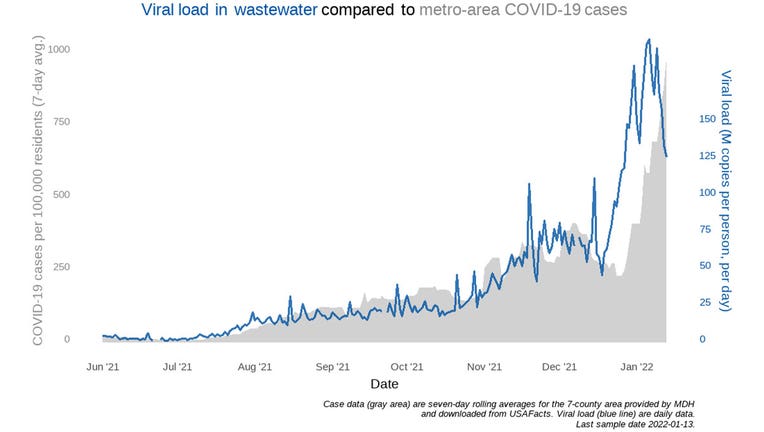Surveillance shows drop in COVID-19 viral load in Twin Cities sewage

(Metropolitan Council / Supplied)
(FOX 9) - A wastewater surveillance program in the Twin Cities, that tracks COVID-19 through our sewage, may show the metro has passed the omicron peak.
Data from the Metropolitan Council shows the viral load of COVID-19 in our waste has fallen off steeply over the last week, after a sharp increase during the omicron spike. In the past, wastewater tracking has been a good indicator of the COVID-19 spread in the Twin Cities and elsewhere. Other cities have shown similar falloffs after COVID-19 spikes.
But, the metro is not out of the woods yet. COVID-19 levels remain very high, even after the drop, and above previous COVID-19 spikes since data started being published in November 2020. It also should be noted that hospitalization and death reports lag behind case number spikes.
Wastewater data continues to show omicron has also become the dominant variant detected since December.
The research doesn’t indicate individual positive cases or how and where outbreaks occur, but it can help give a measure of how prevalent disease is in an area. That data can then be compared to the health department’s information on COVID-19 testing and infection rates.
The wastewater is sampled through a partnership with the University of Minnesota Genomics Center.

